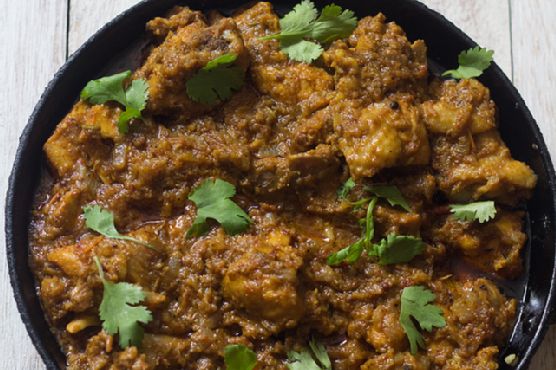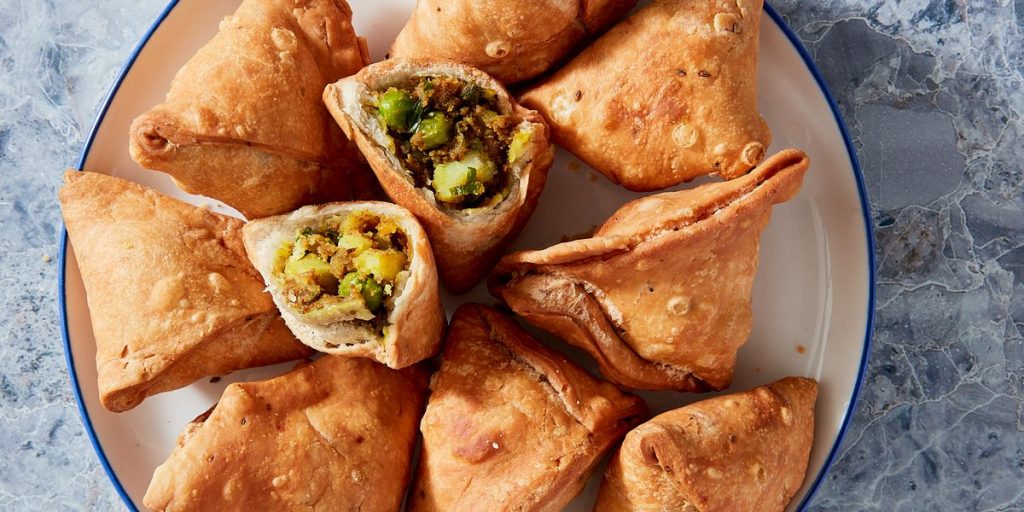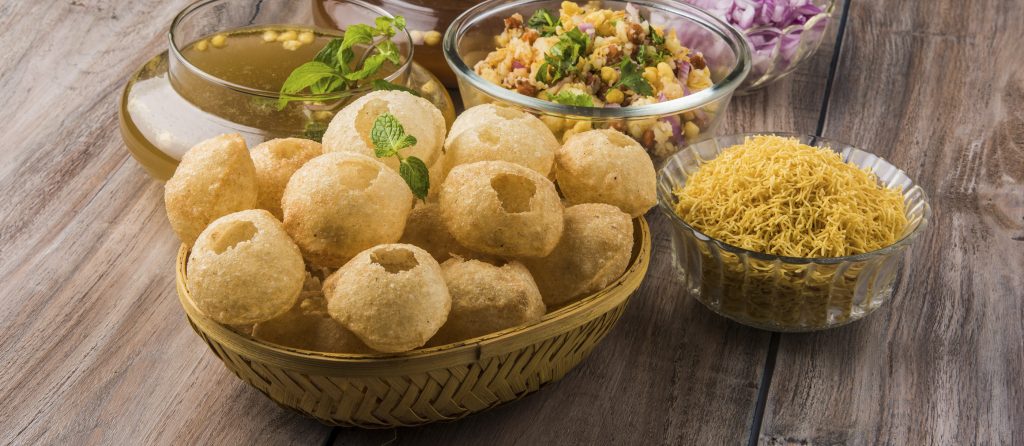Indian food is mainly plant-based and has a lot of grains, nuts, seeds, and seeds (which provide healthy oils). Authentic Indian recipes include lots of healthy, organic ingredients. Traditional spices like turmeric, which reduces inflammation, protects against Alzheimer’s, and makes the heart fitter, are good examples. Indian food has many different tastes, smells, and looks, so there is always something new to look forward to at every meal.
Indian Breads
Bread is one of the most essential parts of Indian food. Even though many of the famous bread on the Indian subcontinent have similar ingredients and looks, they are all made with different cooking methods, textures, or types of dough. Some are flatbreads or thin crepes; others are with dough or crispy puffs. Bread is an essential part of Indian food experts. You can eat it as an appetizer with different chutneys, dips, or sauces, as a snack or meal by soaking up the rich curries and gravies common in Indian food, or as a side dish with other foods.
Chapati
Chapati is a flatbread made from a dough of finely ground whole wheat flour, water, and salt and then cooked on a tawa or flat pan. Popular in other parts of the world, chapati is the basis of many dishes in Asia, the Middle East, and the Caribbean.

Paratha
Paratha is another type of flatbread with whole wheat. It is typical Indian food. Parathas are thicker and sturdier than naan or chapati. They are making it by coating dough with ghee (clarified butter) or oil and folding it repeatedly to make puff pastry. Also, Parathas can be layered or stuffed with spicy vegetables, potatoes, lentils, or paneer, a soft Indian cheese. Parathas are layered and filled with bread that is then deep-fried. You can eat it for breakfast or as a snack in the afternoon.

Naan
Soft, bubbly naan is the most well-known Indian bread. This flatbread doesn’t have any yeast so you can bake or fry it. Additionally, Indian restaurants serve it as a side dish in the US and worldwide. Traditionally, cooking naan needs a high temperature in a tandoor, which is a cylindrical clay or metal oven. You can eat the famous bread plain or with butter, garlic, or chili.

Indian Appetizers
Indian cuisine often starts with a dish that goes well with the rest of the meal. This unique part of Indian cuisine comprises delicious spices, different textures, cultural influences, and legendary creations.
Gobi Manchurian
Indian restaurants serve Gobi Manchurian, which is an Indo-Chinese dish, both in India and in other countries. In Hindi, “gobi” means “pumpkin,” and “Manchurian” is a style of cooking from China that was brought to the Indian subcontinent and used to make sweet and sour sauces. This is especially true in the west, around cities like Kolkata. Therefore, this popular appetizer of deep-fried pumpkin dipped in a spicy, sticky sauce is a classic example of this Indian cuisine.

Pakora
Pakoras are spiced vegetable fritters deep-fried and eaten as a snack, street food, or starter. They are also calling it bhaji. These crispy cakes are often served with tamarind sauce, chutney, or raita at Indian weddings, which are popular dishes.

Momos
Momos are steamed dumplings from China, Tibet, Nepal, and eastern India. Most of the time, these filling dumplings are with tofu, minced meat, or vegetables. They are serving it with a spicy chutney or a clear noodle soup called thukpa.

Chicken 65
It is well known that A.M. Bukhari came up with the famous Chicken 65, named for the year it was made, 1965. The menu at the Bukhari Hotel in Tamil Nadu, India, included the spicy deep-fried chicken dish. Later, Chicken 78, Chicken 82, and Chicken 90 were added to the menu. The historic hotel is still serving some of these today.

Sambar
Sambar is a South Indian vegetable stew with lentils. A dish that is often made with pigeon peas and tamarind broth. People usually eat this dish with rice, dosa, or idli, a tasty rice cake made by steaming fermented rice and lentils.

Indian Dishes
In North, West, East, and South India, cooking styles and methods for making Indian food differ. Because of history, geography, and migration, each part of India has dishes that make its food unique. North Indian food is famous for using yogurt, ghee, paneer, fried snacks like samosas, rich stews and curries, and durians. You can see the influence of the location on west Indian food. Goa’s ties to Portugal, Gujarat’s Chinese solid port, and Maharashtra’s dependence on the sea all affect the food there.
Tikka Masala
Chicken Tikka Masala is one of the most popular Indian dishes, but it is fact that Indian cooks living in Great Britain got the idea from butter chicken. This popular dish is usually made with boneless chicken fried and marinated in a creamy, bright orange curry made with coconut milk and a mix of spices. There is fish and seafood for curries.

Tandoori
A famous dish in India, containers labeled tandoori are usually bread or meat seasoned and cooked at high temperatures in a tandoor oven. Tandoori chicken is the most famous dish of this style. It consists of chicken pieces marinated in spicy yogurt and is available in different heat levels.

Korma
Korma is a type of curry that is creamy and smells good. You can make it by roasting meat or vegetables in a mixture of coconut milk, yogurt, spices, and almonds or cashews. Navratan korma is a vegetarian korma with vegetables or paneer.

Butter Chicken
Butter chicken was a tasty dish in North India in the 1950s. A tandoor is used for cooking chicken that has been marinated. They serve chicken in a rich, spicy tomato and butter sauce. You can also find this dish on the menus of Indian restaurants without chicken. Instead of chicken, they use paneer.

Karaikudi Curry
Karaikudi curry, called Chettinad curry, is a unique South Indian dish with mutton and grated coconut. Still, you can also make it with chicken, fish, paneer, or vegetables. This South Indian dish gets its heat and depth of flavor from the coconut, chilies, and freshly ground spices from Tamil Nadu.

Indian Street Foods
Street food is a big part of Indian culture, and each region, state, and city has its specialties and favorite dishes. Most street food is simple and easy to make and eat on the go, but it still has intense flavors and smells from fried dough, savory vegetables, and roasted spices.
Chaat
Chaat is a type of Indian food popular in street stalls and roadside stands nationwide. It is a dish that combines sweet, salty, crunchy, spicy, and savory tastes and textures by mixing fragrant spices and tangy sauces. Even though each chaat looks a little bit different, most versions of this unique Indian dish have the same basic idea.

Samosas
Samosas are the most popular street food in India. They are fried or baked pastry pockets with savory things like potatoes, onions, and chickpeas that have been spiced. Asia, Africa, and the Middle East have different kinds of samosas with different shapes and fillings. Samosa is an Indian food that is now popular all over the world.

Pani Puri
Pani puri is a unique Indian street food that has many different names in different parts of the country. When you eat pani puri, you poke a hole in one side with your thumb and fill it with a mixture of flavored water, chili powder, chat masala, tamarind chutney, potatoes, chickpeas, or onions. However, spices and fillings vary from region to region. You’ll get a burst of bright flavors and textures if you try the whole puri.

Dosa
Dosa is a classic South Indian dish that has been around for a long time. Thin pancakes or crepes are made from a lentil and rice flour batter. They should be hot, folded in half, or rolled up like a wrap. They are usually serving it with chutney, sambar, and lentil and vegetable stews from South India. Different dosas have different fillings and sauces, different kinds of dough, and ways to make it from region to region.

Misal Pav and Pav Bhaji
Indian street food, like misal pav and pav bhaji, is often served on soft bread rolls called pav. This street food from Maharashtra is a lentil or vegetable curry with a roll to soak up the tasty, spicy gravy. There are many different ways to pair and serve both dishes.

Conclusion
Indian food is famous for its complex and subtle use of spices, vegetables, grains, and fruits which grow all over India. Religion and culture in India have significantly impacted how its food has changed. Many Hindu, Buddhist, and Jain groups follow a vegetarian lifestyle.

